Ērān ud Anērān
Webfestschrift Marshak 2003
[index]
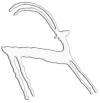
Ērān ud Anērān |
Transoxiana
|
From 1991 to 2002, an extraordinary group of stone funerary furniture, made in Northern China for the local descendents of Central Asians who emigrated to China and lived in cities along its Silk Road, emerged for sale on the art market, from excavations in China and from private collections. All of this funerary furniture, four couches and one house-shaped sarcophagus, depicts Central Asians engaged in a variety of secular activities including feasts, hunts, processions, and entertainments; at least two of the pieces also show religious ceremonies. My involvement with this material began in 1991 when eleven separate white marble panels and two gateposts that originally formed part of a stone funerary couch said to have been found in northern China, appeared on the New York art market. I was asked to examine these eleven stone panels. Intrigued by what I saw--scenes carved in relief originally painted and extensively gilded depicting a complex blend of Chinese and Western imagery and artistic expression--published these pieces in a 1992 catalogue, and the eleven stones and the gateposts were subsequently purchased by the then new Miho Museum in Shiga, Japan.1
After my publication introduced the Miho panels, a number of scholars challenged their authenticity and my judgment. In fact, the debate raged internationally, and some of my colleagues pronounced the demise of my scholarly reputation in the field of Chinese art based on their adamant belief that these stones were fakes. The extraordinary range of imagery depicted on these stones—a marriage feast with dancers and musicians, hunts and processions, and a Zoroastrian ritual—all populated by Central Asians, certainly was unlike anything then known. Undeterred, I continued to study these panels and encouraged my colleague, Dr. Judith Lerner, to join me in unraveling the panels' iconography and style, to define the cultural context that produced this remarkable monument.2
At these initial stages of research, I met Dr. Boris Marshak during his 1993 visit to New York. This began a lively and continuing dialogue about the iconography and arrangement of the Miho panels. Dr. Marshak's interest and belief in the eleven stones never flagged as he continued to probe and to analyze the iconography and the possible narrative relationships suggested by the pictorial imagery on the stone. Captivated, I soon joined Dr. Marshak's worldwide circle of admirers, engaged by his charm, conviction, and passion, and by his extraordinary depth of knowledge ranging from China through Central Asia to West Asia and Western Europe.
The authenticity of the Miho stone panels had been challenged because of their exotic imagery, composition, style, and the absence of archeological context. Prior to their appearance, the remains of only one other funerary couch depicting Central Asians and non-Chinese themes were known, although largely ignored: three relief stone slabs and two gateposts, said to have come from near Anyang in Henan province, and now divided among Boston, Paris and Cologne (one slab is missing). In contrast to the individual panels of the Miho couch, each of the Anyang slabs is divided into three discrete panels by floral and beaded borders. Unfortunately, the Anyang stones also lacked an archeological context. These Anyang reliefs, carved dark grey limestone, were fully published in 1958 by Gustina Scaglia, who identified the figures as probably Hephthalites, dressed in Central Asian garb-long tunics with pearled borders and high boots.3
Between 1992 and 2000, excavations in China uncovered three additional stone funerary monuments, two couches and one sarcophagus, all complete and all with images of Central Asians, thereby substantially enlarging this distinctive group of funerary monuments. In 1992, one couch was excavated near Tianshui (southeast Gansu province).4 In 2000, a second couch was excavated in Xi'an. In the previous year, 1999, a white marble sarcophagus was discovered near Taiyuan in Shanxi province. The Xi'an funerary couch, dated by its epitaph stone to 579 CE during the Northern Zhou dynasty, belonged to An Jia, a Sogdian aristocrat, who came from the important city of Guzang (present-day Wuwei in Gansu) and settled in Xi'an, serving as a sabao, the title given by the Chinese government to the leaders of resident foreign communities.5 The Taiyuan sarcophagus contained the remains of Yu Hong and his wife. Yu Hong died in 593 CE just after the unification of China under the shortlived Sui dynasty.6 His official career actually spanned the Northern Zhou (where he also served as a sabao), Northern Qi and Sui dynasties.7 A Central Asian of probable Turkic ancestry not Sogdian, Yu Hong had served as an ambassador to Persia and the Tuyuhun Kingdom in Qinghai.
Such discoveries, coupled with scientific evaluation of the Miho couch,8 have dispelled any doubts surrounding the authenticity of the Miho couch and established these four couches and the sarcophagus as a distinctive part of China's mortuary art traditions in the North---reflecting the existence of Central Asian communities in China during the 6th through 7th centuries CE.9
Because of the extraordinary subject matter on these mortuary furnishings, Dr. Judith Lerner and I as well as a number of other scholars including Boris Marshak, Frantz Grenet, Rong Xinjiang, Luo Feng, and Jiang Boqin10 have focused research and writing on questions of identity and iconography as well as thematic relationships among the couches and sarcophagus, adaptation and assimilation, and possible workshop traditions. However, there is one important aspect of the narrative reliefs that has remained unexamined: the composition and spatial organization of the pictorial imagery. In the following paper, I will analyze the pictorial imagery, the interactions of figures and animals in a spatial environment created and defined by the presence or absence of landscape elements and architecture, and the narrative structure from the perspective of Chinese representational art and landscape of the 5th to 7th centuries.11
The couches and sarcophagus were produced during a period in China that saw development of the pictorial arts, figure/landscape compositions, and the evolution of early Chinese landscape concepts that led to the eventual emergence of landscape as an independent genre. An evaluation of this mortuary material in the larger context of northern Chinese mortuary and Buddhist traditions, preserved in tombs, in cave temples, on steles and on mortuary furniture, allows critical questions to be addressed: Are the figural landscape compositions on these four couches and the sarcophagus fundamentally Chinese in their conception? Do they reflect the Chinese aesthetic, or do they reflect imported Central Asian or West Asian sources and to what degree? Who fashioned the couches and the sarcophagus--Chinese craftsmen or foreign craftsmen working in China?
During the 4th through 6th centuries, known as the Period of Disunity, China was divided into two broad geographic, ethnic, and cultural spheres with the south ruled by a line of short-lived Chinese dynasties and the north controlled by competing sinicized nomadic regimes. There was no longer a central authority or single metropolitan court style. In the north, regional centers participated in multi-faceted dialogues between regional traditions and the foreign influences arriving with Buddhism and from the Silk Road. The five mortuary objects discussed here cluster around two regional power centers in the north: in the northwest, Northern Zhou and Sui dynasties (with the ancient capital at Chang'an or modern-day Xi'an in Shaanxi) where two couches, An Jia and Tianshui, were excavated; and in the northeast, the Northern Qi dynasty (with the capital at Ye near Taiyuan in Shanxi) where the Yu Hong sarcophagus was excavated. The Anyang stones were said to come from the vicinity of Zhangdefu in Hebei near the Shanxi border. Although the Miho panels share iconographic parallels with the An Jia couch, my original attribution of the Miho couch to Northern Qi on the basis of stylistic features and carving techniques strongly suggests that this funerary couch was found in and around the Taiyuan area as well [Fig. 1].
As mentioned above, the Period of Disunity saw growth of the pictorial arts, figure and landscape compositions, the evolution of early Chinese landscape and its eventual emergence as an independent genre. This development reflects a complex process of discourse with pictorial elements derived from existing Chinese artistic traditions, reaching back to the Han (206 BCE-220 CE) and the earlier Warring States (475-221 BCE) 12 mixing with new elements introduced by Buddhist art, by heightened cultural interaction between China and the West, and by nomadic tribes to the north and west. It is this cultural dynamic, an adaptive and transformative process, that challenges existing artistic traditions and drives the development of pictorial imagery.13
At the same time, the evidence for this growth of landscape imagery and painting is fragmentary at best. Since no actual landscape scroll paintings survive from this period, scholars have relied on later copies of famous works and on the considerable body of literature on painting.14 In addition, two other important sources of information survive primarily in North China: first, the repertory of landscape and architectural settings created to illustrate Buddhist doctrines, settings preserved in the wall paintings of cave temples such as Dunhuang, and carved on stone steles; and second, evidence from Chinese tombs. 15 A small but increasing number of these multi-chambered tombs in both north and south China preserve programs of painted, carved or stamped decoration on tomb walls and/or on stone mortuary furniture contained in the tombs. The use of landscape and architecture varies widely in this Buddhist and mortuary evidence, ranging from the perfunctory insertion of a tree or part of a building or open pavilion to more integrated and complex compositions.
Coming from the north, the three couches and one sarcophagus significantly expand the existing repository of pictorial information about the use of landscape, the acquisition of means to create the illusion of space, and narrative structure. Painted and often gilded scenes carved in relief depict animals and humans, all Central Asians, actively engaged in outdoor settings that are created and defined by landscape elements and architecture. Not only are these scenes populated by Central Asians, two of the tomb owners who commissioned the Xi'an couch and Taiyuan sarcophagus have clearly been identified as non-Chinese or at least descendants of non-Chinese, raising the question of the possible role and impact of foreign influences in shaping the narrative/landscape/figural compositions and in the larger evolution of Chinese landscape. This new material presents an opportunity to evaluate the organization of the pictorial composition within the context of what scholars accept as characteristic representational norms of early Chinese landscape preserved in tombs and mortuary furniture depicting Chinese subject matter such as the Nelson Gallery sarcophagus and recently excavated examples.
Before focusing on the landscape/figure composition, it is important to observe the arrangement of the stone panels and the structure of the mortuary couches and sarcophagus. The pictorial scenes on the couches have been carved in relief either on individual rectangular stone panels [Fig. 2] or on single larger stones subdivided into the equivalent of three vertical panels [Fig. 3]. Whether separate or subdivided, each panel is filled with a narrative set in a landscape context. The panels remain discrete, their separateness defined and emphasized by an enclosing border that is filled either with a leafy or floral vine/rinceau or left undecorated [Figs. 2,3]. The contiguous pictorial scenes, for example, those visible on the Xi'an couch [Fig. 5], do not exhibit any direct connections compositionally--although the twelve stone panels from a single mortuary couch may relate to each other as part of a larger symbolic narrative cycle, conveying a specific sequence of events. This is suggested in the reading of the Xi'an couch proposed recently by Rong Xinjiang.16 He writes that the twelve compositions should be read not left to right, nor right to left, but instead from the center or keystone panel, with the narrative actually alternating from side to side.
Assembled on a base, the stone panels form a three-sided enclosure, reminiscent of traditional Chinese domestic furniture, the formal sitting couch (chuang) and the canopied bed (chazuchuang) [Fig. 4]. In the tomb, the couch becomes a ling chuang or "spirit couch." This articulation of the enclosure panels is also suggestive of paneled screens; a number of Northern Qi dynasties tombs show in essence a painted version of the funerary or spirit couch on the north wall of the burial chamber behind the coffin platform – figures with or without landscape elements have been positioned in contiguous vertical rectangular spaces enclosed in a painted border forming a two-dimensional paneled screen or painted version of a funerary couch17. A Northern dynasties tomb found near Jinan in Shandong depicts a painted version of a canopied couch that rests on a base very similar in form to An Jia's couch excavated in Xi'an. The painted curtains looping across the front and blowing at the sides clearly describe a chazuchuang or canopied bed [Fig. 6].18
On all four couches and the sarcophagus, the pictorial compositions share in varying degrees a fundamental approach to creating a plausible sense of space within an image field defined by borders in which human, animals or landscape elements interact in compositions displaying varying degrees of complexity. These pictorial compositions, adapted to the rectangular format of stone panels, read vertically from bottom to top or vice versa. 19
Within this vertical orientation, two compositional strategies are evident: in one, the stylized landscape elements, figures, and architecture create a visually coherent sense of space that moves from the foreground to the middle ground by stacking and overlapping pictorial elements nearly to the top of the panels and stopping, with the far distance suggested by a disconnected distant mountain range and/or clouds. In the second strategy, panels divide into upper and lower sections, each depicting an event in a more shallow foreground space. Both strategies are almost equally represented on two couches, Xi'an [Fig. 5] and Miho, [Figs. 2, 10, 15] while only the first appears on the Tianshui couch [Fig.7]. The Anyang stones reflect predominately the second strategy with perhaps one exception [Fig.3]. The scenes on Yu Hong's sarcophagus blend these strategies differently [Fig. 8, 16-18].
In the first more spatially unified composition, the rectangular image field or picture plane defined by borders appears tilted up, a technique that is admirably suited to the rendering of narrative events. The tilted buildings give greater visibility to interior spaces and human activities within. Overlapping rocks or hillocks, some fringed with stylized vegetation, stretch across the bottom edge of the composition anchoring the immediate foreground.20 The activities of animals and humans occupy the foreground and move into a plausible middle ground, emphasized sometimes by a pebble strewn ground, moving back and up, reaching three-quarters of the distance towards the top of the panel, [Figs. 2,5,9,10,13]. This approach to the landscape/figure composition and narrative organization is paralleled by the more sophisticated version found on the early sixth century limestone sarcophagus in the Nelson-Atkins Museum of Art, Kansas City, Missouri, and on other early to mid-sixth century funerary furnishings.21 Some scenes from the Xi'an and Tianshui couches also define the middle ground using Chinese pavilions with diagonal footbridges that give access to the foreground space and sometimes connect to the middle ground. Chinese architecture, pavilions (some placed on diagonals), and snaking roofed walls and walkways dominate the spatial dynamic of all but one of the panels on the Tianshui couch [Fig. 7]. There is a break with no organic connection to the far distance that is often defined by small horizontal rows of distant cloud scrolls, birds in flight, and hills--again visible on the Nelson Gallery sarcophagus and the clay tomb tiles from Dengxian in Henan [Fig.11,12].
Interestingly, outdoor scenes of nomadic encampments including yurts, scampering small animals, unsaddled horses, or entertainers have some of the most successful landscape/figure compositions, capturing an evocative sense of space and movement. Three such scenes occur on the Xi'an couch and one on the Miho. Two of the encampment compositions, one from Xi'an [Fig. 5] and one from Miho [Fig. 10], incorporate a telling feature that reinforces the palpable articulation of space and implies narrative time. Of the three Xi'an examples, one has a yurt positioned deep in the middle ground. Figures, appearing to be guests, kneel outside on a rug to the left engaged in conversation and enjoying refreshments. In the foreground, just above and behind the mules and camels, are three grooms, two of whom have turned to look at the men sitting in the yurt and/or the guests. The Miho version also depicts a yurt in the middle ground containing a seated Turk. To the left, three more Turks seen from the back kneel on a rug facing the yurt; one of the three turns his head and appears to be looking directly at the groom standing nearby with the horses. Placed at the center of the scene, the horses, shown from three viewpoints, a side, front and three-quarter back view, create a breathtaking passage capturing well-modeled energetic animals pawing the hillocks or rocks. Even with the gilded backgrounds that survived on the Xi'an panels (and did not on the Miho couch) and which tend to flatten the space and introduce a decorative element, the energy and spatial evocativeness of these scenes is not diminished.
On the Tianshui panels, there are human figures engaged in a procession, hunting, and drinking, but they do not assume the same prominence as the figures on the other three couches and sarcophagus [Fig. 7]. In fact, the Tianshui figures are tucked into the architectural structures and groupings of landscape elements, rocks, and trees and are barely visible, or totally absent. More than on any of the other three mortuary couches, these integrated compositions evoke later vertical landscape scroll compositions. The strong sense of three-dimensional space is achieved by an accumulation of strategies, overlapping, diagonals, changes of scale, translation of an intuitive and empirical understanding into visual vocabulary on a tilted image field--not the rational and systematic approach of a linear perspective system.
The second compositional strategy divides the pictorial space into two registers. With a few significant exceptions, these events are depicted in a shallower more compressed space, with most activity remaining in the foreground. Figures, animals, buildings, and landscape elements parallel the picture plane. The landscape or architectural elements are positioned to emphasize separation between the two registers. Often the same person is represented engaged in two different activities, perhaps also implying a narrative or sequential time relationship, with the event in the upper register usually preceding the scene in the lower register [Fig. 13]. Michael Sullivan suggests that the convention whereby the same figure might be represented performing different scenes in the successive stages of the narrative on the same plane was an innovation introduced into China from western Asia to meet the demands of illustrating Buddhist teachings, such as the Jataka tales carved on the horizontal transom on Sanchi's north gateway.22 The horizontal format might have been adapted to a more vertical one. A similar perhaps less developed concept emerges in programs of tomb decoration in the Eastern Han, such as the tomb of Mixian in Henan.23
This two tier compositional strategy also seems to have been reserved for more iconic religious and symbolic or ritual scenes like those on the Xi'an and Miho couches, in particular. In one example, on the Miho couch, the center panel depicts the sagdid ceremony, a Zoroastrian burial rite with a priest wearing a padam presiding over the sacred fire in the top register, while in the bottom register, what appears to be a solemn assemblage of male and female figures stands and look towards a tree; three horses stand behind the figures [Fig. 14]. Another Miho scene shows a riderless horse being given an offering under an umbrella or canopy that effectively divides the bottom from another mounted procession above [Fig. 15]. The center panel of the Xi'an couch has a heraldic arrangement with two dignitaries on horseback above a pavilion with a circle and crescent on the roof and framed in a pearl border; the same two dignitaries appear to be in this pavilion kneeling at a table and engaged in a formal exchange [Fig. 13].24
The Anyang stone panels and Yu Hong's sarcophagus share many similar themes and landscape elements with the other three couches, including processions, hunts, feasts, and images of musicians. The organization of the pictorial space on the panels from the Anyang and Yu Hong differs somewhat from that on the other three couches. The picture plane described on the Anyang stones is densely packed with finely carved and layered low relief embellished with repetitive scenes and patterns; the pearl border is particularly ubiquitous, edging almost all the long tunics, the architecture, and the borders enclosing the panels [Fig. 3]. The pictorial space in each panel, divided into registers, is very shallow foreground space and all elements with the exception of the diagonal entrance ramps to the pavilions (as seen on Han reliefs) are parallel to the picture plane.25 Here, roofs of the pavilions create two and often three registers, "stacking" one above the other scenes filled with Central Asians. Highly stylized shapes of trees, rocks and clouds fill or often squeeze into available spaces generally towards the top or bottom edges of the panels; an occasional stylized rock seems to stray into the empty spaces between horses' legs. Activities on this funerary couch center around a high ranking official who is depicted drinking in a grape arbor, journeying on horseback with an entourage, and perhaps arriving at the pavilion entrance below to sit and drink with a group of Central Asian ladies. Despite the shallowness and density of the composition, the pictorial space is animated with a sense of movement and energy.
Although the panels from Yu Hong's sarcophagus are also organized vertically and divided into two registers, the upper register occupies two-thirds of the space and is filled with a depiction of an activity or event while the remaining one-third of the space is filled with symbolic or mythical animals, animal combat, and animal and human combat [Figs. 8,16-18]. But in contrast to the four couches, these compositions use far fewer pictorial elements that exist in two types of pictorial space. In all but the central panel, the sense of space is both indeterminate and evocative, depending upon the placement of the pictorial elements; the depiction of a Turk hunting on camelback has virtually no context yet the sense of space is evoked as the camel strides along snarling and the Turk twists backward to loose an arrow at the attacking lion [Fig. 17]. In contrast, the image field of the central panel is filled with a large feasting scene positioned in a setting created by using a visual one point perspective—all diagonals, except the musicians' mats, recede to the central pavilion. The organization of this scene is reminiscent of the emerging paradise scenes recorded on the backs of Sichuan Buddhist stele [Figs18,19]. These two modes of compositional organization, indeterminate or evocative space utilizing few, if any pictorial, elements, or complex scenes structuring space with a combination of landscape and architecture, are consistently found in Chinese representational art and emerge in tomb décor at least as early as the Han Dynasty.
After extensive analysis, I conclude that the underlying conception of pictorial space and the configuration of the landscape/figure context on all five of these stone objects remains fundamentally Chinese.26 In varying degrees, the scenes on the stone panels share a tilted ground plane conveying a plausible or palpable sense of space that is "open yet contained, free yet controlled." Within this space, the pictorial elements from landscape to figures, animals and even architecture appear animated or imbued by energy, what- Dr. Soper describes as "life-motion."27 Most of these panels from the couches and the sarcophagus show Central Asians active within this image field, reinforced with stylized landscape elements and architecture (usually Chinese), as well as borrowed random foreign motifs, cultural markers, and iconography. To cite a few examples, on the Anyang panels Sogdian beribboned birds with large tails stand in the sky, while on the Xi'an couch, the boar hunt with grasses behind or the two figures meeting on horseback and the heraldic composition, are hallmarks associated with Sasanian and West Asian cultures [Fig. 20]28. Some of the animals on the Miho couch such as the leaping lions are modeled after Kushan versions, while the large bull on the base of Yu Hong's sarcophagus panel also comes from India.
Among this group of mortuary furnishings, I believe that the handling of space on Yu Hong's sarcophagus and to a lesser extent on the Anyang stones seems to have been more modified and more reflective of influence from the West than the others. Although busy filled surfaces of the Anyang stones can be found on sixth century funerary monuments without any non-Chinese subjects, here, the imagery is not only much more dense but also compressed and repetitive, creating a decorative and textile-like effect. Some "life-motion" is expressed near the top of the panels where scudding clouds or flapping flags are tightly compressed. Here, the rocky landscape that usually runs along the lower edge of the panel has been replaced with the stylized scalloped hill shapes found on Iranian metal work. Yu Hong's sarcophagus also reflects mixed approaches, including rather few typical Chinese motifs or landscape elements; for example, the typically Chinese rocky hill formations are missing, replaced by highly stylized scalloped shapes randomly placed in corners, particularly in the lower panels.
There are many issues raised by the analysis of the pictorial space with its incorporation of landscape elements. Several related questions inevitably emerge from the mixed approaches and diverse sources converging in the pictorial vocabulary and iconography on these mortuary furnishings: What were the sources of the imagery on these stone funerary furnishings? Were there Chinese workshops with pattern books from which the client selected stock scenes or did the client bring imagery to the workshop? Or were foreign craftsmen working alongside Chinese artisans in Chinese workshops? The handling of the image field and pictorial elements strongly suggests that they were carved by Chinese artisans incorporating non-Chinese imagery.
Finally, on these four couches and the sarcophagus, the range of styles and iconography reflects the impact of a new and complex cultural dynamic of exchange and convergence created during the Period of Disunity from the 4th through 7th centuries. The existing fabric of traditional Han culture confronted, responded to, transformed and absorbed nomadic invasions and rule, a thriving trade with the West, an influx of Central Asian traders, dignitaries, and diplomats, and the Buddhist religion. These couches and the sarcophagus made for foreigners or foreign descendants living in China provide an intriguing model of intercultural discourse—offering insights into the Chinese response to foreign influences and into the significant and prolonged interactions with West during this Period of Disunity.
* Professor of Art History, Rutgers University-Newark Campus (USA)
1 Annette L. Juliano, "Northern Dynasties: A Perspective," in J.J. Lally & Co., Chinese Archaic Bronzes, Sculptures and Works of Arts (New York, 1992), 1-15; Annette L. Juliano and Judith A. Lerner, "Eleven Panels and Two Gate Towers with Relief Carving from a Funerary Couch," Miho Museum: South Wing (Shigaraki, 1997), no. 125, 247-57; Annette L. Juliano and Judith A. Lerner, "Cultural Crossroads: Central Asian and Chinese Entertainers on the Miho Funerary Couch," Orientations, 28, no. 9(1997), 72-78; Annette L. Juliano and Judith A. Lerner, Monks and Merchants, Silk Road Treasures from Northwest China, (New York: The Asia Society, 2001), entry 106, pp. 304-309.
2 On one of the Miho panels, Dr.Lerner identified the Zoroastrian funerary rite known as the Sagdid ceremony: "Central Asian in Sixth Century China: A Zoroastrian Funerary Rite," Iranica Antiqua 30 (1995):179-197.
3 Gustina Scaglia. "Central Asians on a Northern Ch'i Gate Shrine," Artibus Asiae 21 no.1(1958), 9-28.
4 Tianshui Museum, "Tianshui shi faxian Sui-Tang pingfeng shiguan chuangmu," Kaogu (1992) no. 1: 46-54; Michele Bambling, "The Kongo-ji Screens:Illustrating the Tradition of Yamato-e ‘Sun and Moon' Screens," Orientations, 27 no. 9 (1996), pp. 81-82; Juliano and Lerner, Monks and Merchants, entries 106-108, pp. 304-313.
5 Shaanxi Archeological Institute, "Xi'an faxian de Bei Zhou An Jia mu," Wenwu (2001), no.1: 4-26.
6 Shanxi Archeological Institute, et al., "Taiyuan Suidai Yu Hong mu qingli jianbao," Wenwu (2001) no. 1: 27-52.
7 Albert E. Dien, "The ‘sa-pao' Problem Re-examined," Journal of the American Oriental Society 82 (1962) 335-46.
8 Pieter Meyers, "Acquisition, Technical Study and Examination," Miho Museum: South Wing (Shigaraki,1997), 319-320
9 The August 26, 2003 issue of the Chinese newspaper, Wen Hui Bao, recounted the discovery of another Northern Zhou stone sarcophagus found in a tomb in the northern suburbs of Xi'an. From the newspaper account, this promises to be the most extraordinary of this group of mortuary furnishings depicting activities of Central Asians.
During the Northern Zhou, the tomb occupant with the Shi family name had been appointed as a panshi (supervisor) of Liangzhou region, including the area from Wuwei to Pingliang in modern Gansu, to oversee the affairs of peoples coming from Sogdiana, Central Asia, and Western Asia into China. His grandfather and father were also sabao. Most of the décor is focused on the theme of entertainers. In addition to the relief carving on the sarcophagus which has been painted and partially gilded, the tomb contains, for the first time, written materials relating to Sogdians of the western regions. The publication of this tomb, the contents and the sarcophagus promises to provide critical insights into Sogdian community and culture that existed in northern China during the sixth century. It also emphasizes the importance attached to maintaining one's ethnic and cultural identity even while adapting to culture of China and traditional Chinese burial customs. (This article in the Wen Hui Bao was translated by Professor Victor Mair, who kindly dispersed it by email to interested colleagues in the field).
10 This group of scholars has published on related topics and accumulated extensive bibliographies; for a few selected examples see: Luo Feng, "Central Asian Shi people who migrated to China," (in Chinese). Guoxue Yenjiu 2000, no. 7:235-78; Rong Xinjiang, "The Migration and Settlements of the Sogdians in the Northern Dynasties, Sui, and Tang, "China Archaeology and Art Digest, 4, no. 1 (2002):117-63 and see footnote 8 below; Jiang Boqin, "The Zoroastrian Art of the Sogdians in China," China Archaeology and Art Digest 4, no. 1 (2000): 35-71; B.I. Marshak, ‘La thematique sogdienne dans l'art de la Chine de la seconde moitie du VIe siecle," in Academie des Inscriptions & Belles-Lettres, Comptes rendus des seances de l'annee 2001 janvier-mars, Paris, 2001: 228-64.
11 One pictorial device seen repeatedly in the narrative scenes on all the couches and sarcophagus is the partial cutting off of animals, architectural structures, or figures on horseback.
The animals in particular seem to jut into the scene from the borders of the stone panels while the horseback riders seem to be disappearing out of or entering into the scene from the border. When the eleven Miho panels were first published in 1992, this "cut-off" imagery was cited as a highly suspect feature of these narrative scenes, contributing to the cloud of doubt that surrounded the authenticity of this couch; for examples, see Juliano, "Northern Dynasties," nos. 1a-k. However, this device is found in Chinese pictorial art as early as the Han, see Wang Jianxhong, Handai huaxiang shi tonglun (An Introduction to the Stone Reliefs of the Han Dynasty), (Beijing, 2001):294.
12 Esther Jacobsen argues persuasively in her article " Mountains and Nomads: A Reconsideration of the Origins of Chinese Landscape Representation," Bulletin of the Museum of Far Eastern Antiquities, 57 (1985): 133-185, that the contribution of the nomads to the development of pictorial art, particularly landscape, has been both ignored and undervalued.
13 In 1975, I organized a pioneering exhibition focusing on this nearly four century hiatus between the Han and the Tang dynasties which except for the development of Buddhist art had virtually been ignored by scholars, see Annette L. Juliano, Art of the Six Dynasties: Centuries of Change and Innovation (New York, China Institute in America, 1975). In 2000, Wu Hung, launched a research project focusing on these four hundred years of disunity as one of the most pivotal periods in Chinese history and art history, see Wu Hung, editor, Between Han and Tang: Religious Art and Archeology in a Transformative Period (Beijing, 2000), the first of three volumes.
14 In the Han Dynasty, there were virtually no literary or historical texts concerning the development of Chinese thinking about landscape and pictorial representation. In contrast, during the Six Dynasties period, a body of literary and aesthetic theory emerges, found in both historical and theoretical texts on art, biographies of painters in dynastic histories and other miscellaneous sources. For a convenient discussion of some of these sources, see Michael Sullivan. The Birth of Landscape Painting in China (Berkeley and Los Angeles, 1962): 86-126.
15 Pictorial compositions, figural or landscape, found on tomb walls or on mortuary furniture have consistently been utilized by scholars as a viable source of information or a reflection of early painting traditions. As more pictorial evidence from tombs accumulates, the connection between painting and tomb décor has strengthened and proven increasingly valuable for several reasons. First, literary sources preserved from painting texts and other literary sources such as dynastic histories demonstrate the use of the same subject matter in lost paintings and tombs such as paragons of filial piety and the "Seven Sages of the Bamboo Grove," see Alexander C.Soper, Textual Evidence for the secular Arts of China in the Period from Liu Sung through Sui (Ascona, Artibus Asiae Supplementum 24, 1967):17,19. Second, in addition to actual painted tomb walls, tomb décor in more durable media, clay and stone, clearly evidences attempts to translate painterly brush techniques. In wall compositions found in two tombs near Nanjing, Danyang and Xishanqiao (Seven Sages of the Bamboo Grove), the tiles are assembled on the wall like a puzzle to create a large wall mural—a technique that suggests that popular paintings were transferred to walls, see Wenwu (1974), no. 2:44-56 (Danyang) and Wenwu (1960),no. 8-9: 37-42 (Xishanqiao). These tiles also employ raised relief lines in clay that mimic the "silk thread brush line" believed to have been pioneered by the famous 4th century painter Gu Kaizhi while other tiles from the Dengxian tomb in southern Henan imitate the flexibility of the brush by recreating lines in relief that thicken and thin, undulating to define forms, see Annette L. Juliano, Teng-hsien: An Important Six Dynasties Tomb (Ascona, Artibus Asiae Supplemetum 37, 1980), pp, 54-58 and Dengxian caise huaxiang zhuanmu (Colored Images from the Tiles Tomb from Dengxian) Beijing, 1956); and third, the incorporation of and interest in landscape and figural elements, see examples noted below.
For myriad examples from Dunhuang dating from Northern Liang through Tang, see Dunhuang wenwu yenjiuso bian, Zhongguo shiku: Dunhuang Mogaoku (Beijing, 1981, Vol. 1); (Beijing, 1984, Vol. 2); (Beijing, 1987, Vol. 3). Examples from Buddhist stelae and tombs can be found in Xi'an Beilin Bowuguan (Xi'an Forest of Stone Tablets Museum), (Xi'an, 2000): 74-87, 100-101.
16 Rong Xinjiang, "The Illustrative Sequence on An Jia's Screen: A Depiction of the Daily Life of a Sabao," Orientations, 34, no. 2 (2003): 32-35.
17 Xia Mingcai and Shandong sheng Yidu xian bowuguan,"Yidu Beiqi shi shimu xianke huaxiang (Incised stone reliefs from the Northern Qi stone chambered tomb at Yidu)," Wenwu (1985), no.10:44-45.
18Shandong Bowuguan kaogu yenjiuso,"Jinan shi Dongbeiliwa Beizhou pihua mu (Wall paintings from the Northern Zhou tomb at Dongbeiliwa in the southern suburbs of Jinan)," Wenwu , (1989), no. 4:69.
19 Typically in tombs, the pictorial scenes occupy large horizontal image fields with drawn or implied ground planes; these scenes are usually not restricted by a rectangular frame. Other smaller defined spaces, such as lintels, pillars, and lunettes, usually contain symbolic creatures rather than narrative scenes. The cut off in the pictorial scenes suggests adaptation from another format.
20 These features are consistently found in pictorial art, both Buddhist and non-Buddhist, during the Period of Disunity, see Alexander C. Soper, "Early Chinese Landscape Painting," Art Bulletin
23 (l941), 141-164 and "Life Motion and the Sense of Space in Early Chinese Representational Art," Art Bulletin, 30 (1948):164-86. James Cahill, " Approaches to Chinese Painting, Part II," 5-9, and Wu Hung, "Origins of Chinese Painting (Paleolithic to Tang Dynasty)", 34-58 in Yang Xin, Nie Chongzheng, Richard M. Barnhart, James Cahill, Lang Shaojun, and Wu Hung, Three Thousand Years of Chinese Painting, (New Haven, London, and Beijing,1997).
21 See Wu Hung, "Origins," pp. 55-56, Figs. 45 and 46. This stone sarcophagus depicts the conservative Confucian theme of filial piety utilizing a sophisticated configuration of landscape elements to define and to advance the narrative structure across the sides of the sarcophagus.
See also the sophisticated figure landscape narrative scenes arranged in a vertical two tiered format on the end walls of a sixth century shrine (probably a house-shaped sarcophagus) of Ning Xiang.. On one end wall, two Paragons of Filial Piety are shown: one above, Dong Yong which is separated from the scene below of Tong Yen's mother conversing with Wang Ji's mother by a pebble strewn ground plane and stylized layered rocks. This house was said to come from Luoyang, Henan and is now in the Museum of Fine Arts, Boston, see Kojiro Tomita," A Chinese Sacrificial Stone House of the Sixth Century A.D.," Bulletin of the Museum of Fine Arts, Vol. XL, no. 242 (Boston, December, 1942), pp. 97-110, Figs. 4,5,7,8.
Another stone mortuary bed or couch with back and side panels illustrating Paragons of Filial Piety was shown by Gisele Croes in New York in March of 2004. The stories are set in typical early sixth-century stylized Chinese landscape-figure compositions. See Annette L. Juliano and Judith A. Lerner, "Stone Mortuary Furnishings of Northern China," in Ritual Objects and Early Buddhist Art, Gisele Croes, Brussels, 2004, pp. 15-23, plates from pages 24-57.
22 Sullivan, The Birth, p. 153.
23 An Jin-huai and Wang Ma-gang, "Mixian Dahuting Handai huaxiang shimu he bihua mu," Wenwu (1972),no. 10: 49-62. The evident owner of the tomb is shown in an open tent pavilion presiding over the feasting and entertainment. Other less well-preserved scenes show an escorted chariot; the occupant could easily be the deceased arriving for his own elaborate funerary feast.
24 Similar tiered compositions with symbolic elements can be found in Eastern Han tombs. The Yinan tomb in Shandong attributed to the late Eastern Han contains a number of rectangular panels carved on the faces of stone pillars depicting Xiwangmu on the bottom with Nukwa and Fuxi just above, Wang Jianzhong, p. 288, Fig. 52.
25 Wang Jianzhong, Figs.16, p.160; 70, p.390; 78, p. 400; 79, p. 402.
26 As Michael Sullivan observed in the Birth of Chinese Landscape Painting, "while China borrowed both customs and art motifs from her western Asiatic neighbors, the evidence shows that she did not borrow the attitude of mind-," p.167.
27 Soper,"Life Motion," pp. 164-86.
28See the discussion of the boar hunt in the reeds and the confronted horsemen on the Xi'an Couch in Lerner's article in this volume. For the boar hunt, see the Sasanian-style plate found in a Northern Wei tomb dated 501 at Huagedatu in Xiaozhen Village, Datong. This plate was probably produced in a provincial workshop in the eastern edge of the empire, see Loyang Bowuguan, " Mu Yuji and Datongshi Bowuguan, " Datongshi Xiaozhancai Huagedatai Beiwei mu qingli qianbao ( Short report about the discovery of the Northern Wei tomb at Huagedatai in Xiaozhan Village in Datong)," Wenwu (1983), no. 8:.2, Fig. 4. and see Prudence O. Harper, Silver Vessels of the Sasanian Period, Volume One: Royal Imagery, (New York and Princeton, 1981): Pl. 23 and pp. 133-134.
LIST OF ILLUSTRATIONS
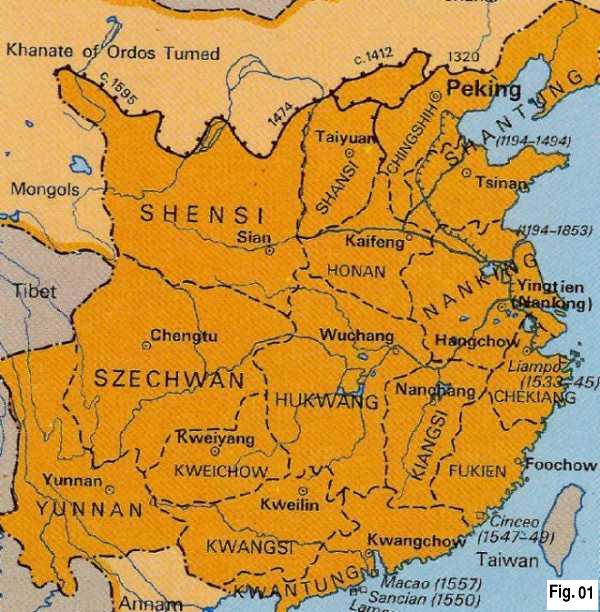
Fig. 1: Map of China showing cities of Xi'an (Sian),
Shaanxi (Shensi), and Taiyuan, Shanxi (Shansi).
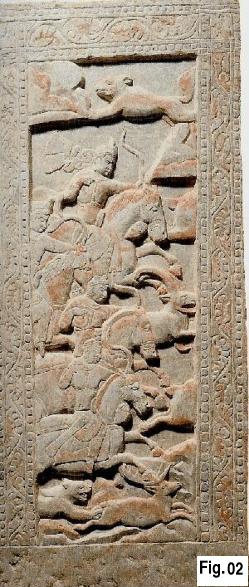
Fig. 2: White marble panel with remains of pigments depicting a
hunt from Miho funerary couch, Miho Museum, Shiga, Japan (after Miho
Museum: South Wing, 250).
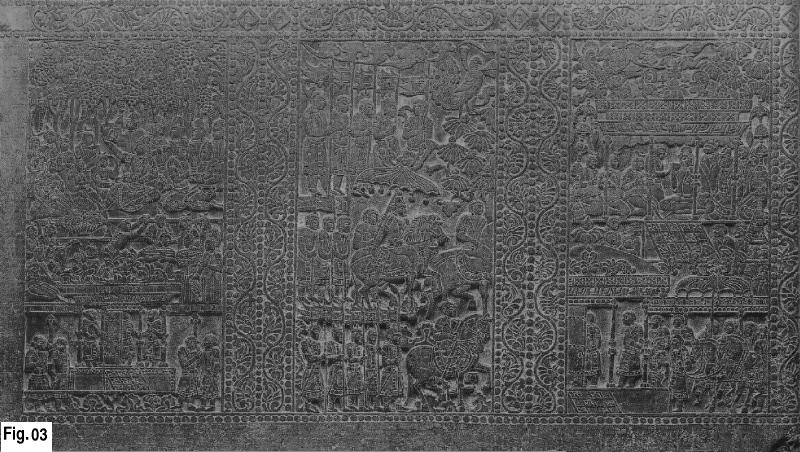
Fig. 3: Limestone slab subdivided into three panels from funerary
couch found near Anyang, Henan, Museum of Fine Arts, Boston (after
Juliano, "Northern Dynasties," Fig. xii). Photograph
© Museum of Fine Arts Boston.
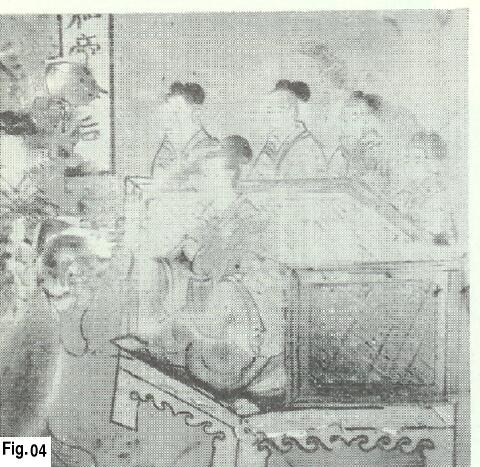
Fig. 4: Scene from lacquer screen found in tomb of Sima Jinlong,
Datong, Shanxi, dated 484 CE (after Wenwu, 1972.1, Pl. 13:1).
Photograph © Museum of Fine Arts, Boston.

Fig. 5: Drawing of scenes carved on panels from Northern Zhou
mortuary couch found in tomb of An Jia dated to 579 CE found in
Xi'an, Shaanxi (after Wenwu, 2001.1, ).
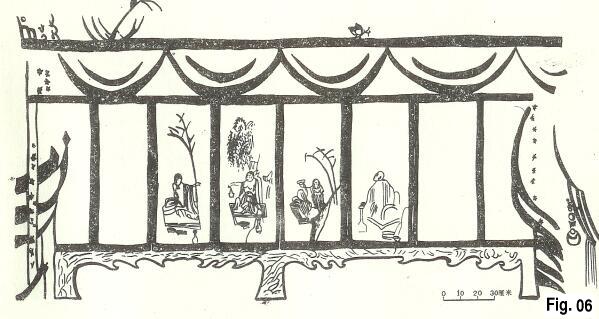
Fig. 6: Painting of canopied couch from wall of Northern Zhou
tomb found near Jinan, Shandong (after Wenwu, 1989.4).
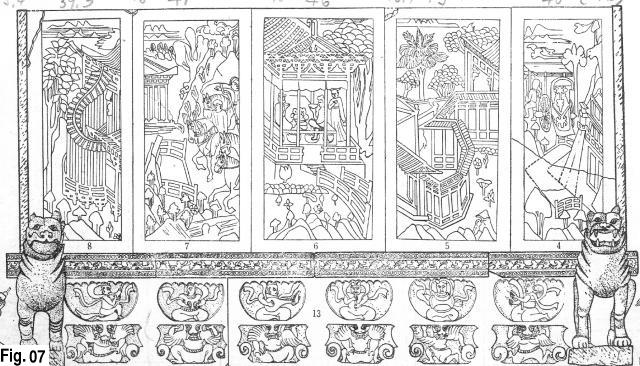
Fig. 7: Drawing of the five granite panels from the back of the
Sui funerary couch resting on the decorated base supported by two
lion sculptures, found at Tianshui, Gansu (after Kaogu, 1992.1)..
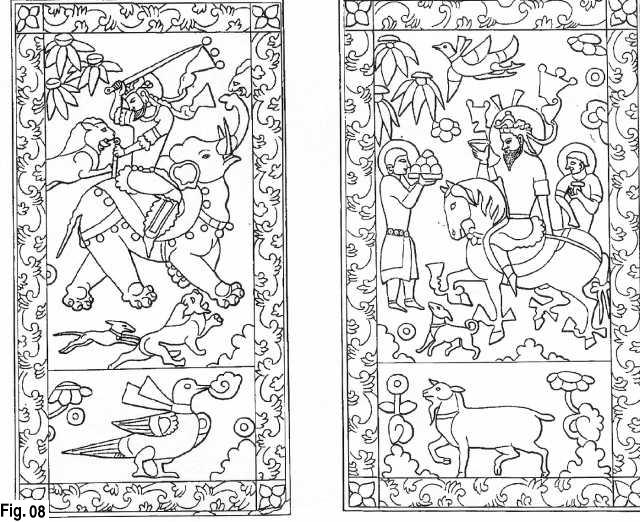
Fig. 8: Drawing of two panels from Yu Hong's marble
sarcophagus, dated to 593 CE, found at Taiyuan, Shanxi (after Wenwu,
2001.1).
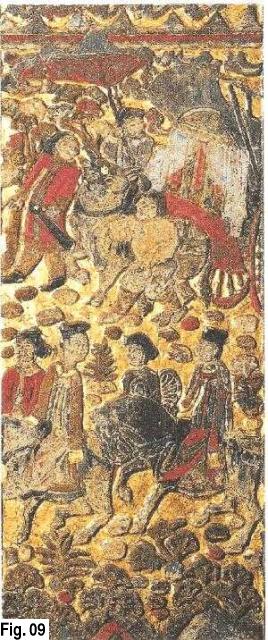
Fig. 9: Relief carving of oxcart and ladies on horseback from one
painted and gilded panel from An Jia's funerary couch, dated
579 CE found in Xi'an, Shaanxi (after Wenwu, 2001.1:11
and Han Wei, Han Wei kaogu wenji (Beijing, 2001):104-119).
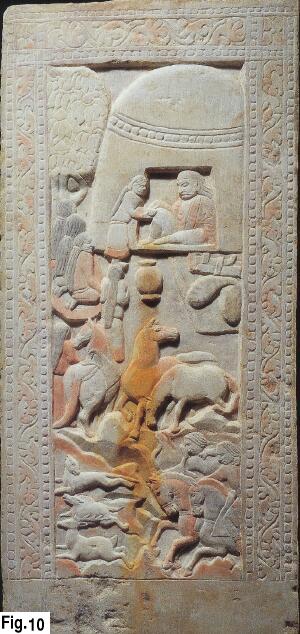
Fig. 10: Marble panel with remains of pigment depicting nomadic
encampment from Miho funerary couch in Miho Museum, Shiga, Japan
(after Miho Museum, South Wing, p. 250,c).
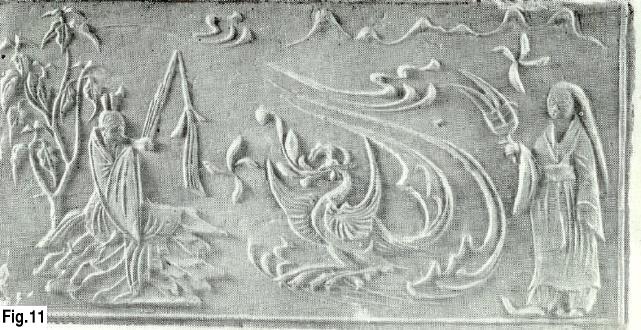
Fig. 11: Clay tile with traces of paint from an early sixth
century tomb found at Denqxian, Henan (after Dengxian, p. 24, Fig. 27).
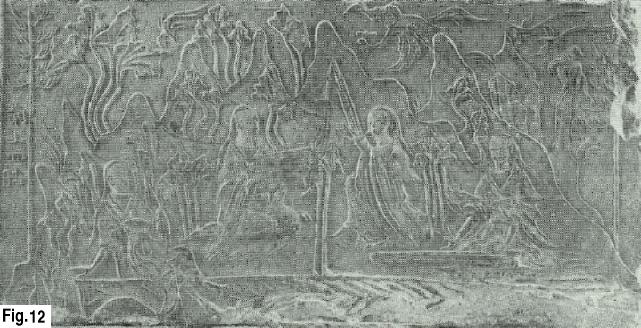
Fig.12: Clay tile with traces of paint from an early sixth
century tomb found at Dengxian, Henan (after Dengxian, p. 26,
Fig. 31.)
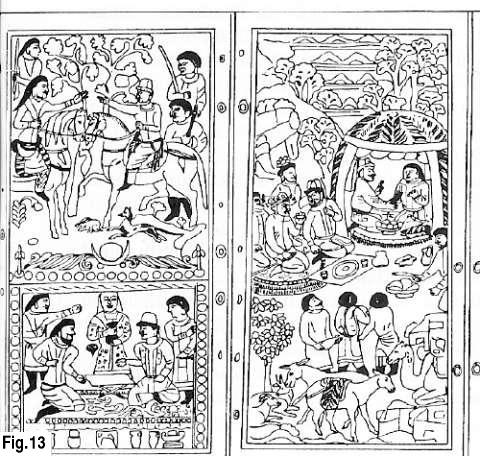
Fig.13 Drawing fo scenes from An Jia's funerary couch dated
579 CE found in Xi'an, Shaanxi (after (after Wenwu,
2001.1:11 and Han Wei, Han Wei kaogu wenji, Beijing,
2001:104-119).
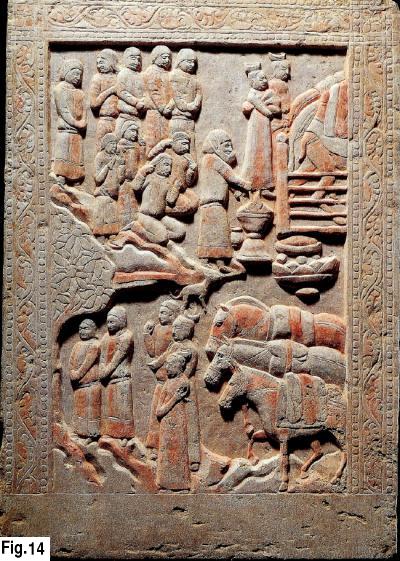
Fig. 14: Marble panel depicting sagdid ceremony from Miho
funerary couch in Miho Museum, Shiga, Japan (after Miho Museum:
South Wing, p. 252F).
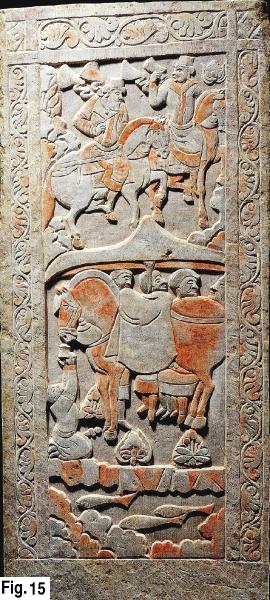
Fig. 15: Marble panel with a divided composition, kneeling figure
with offering for a horse below with two figures on horseback above,
Miho Museum, Shiga, Japan, (after Miho Museum: South Wing, p.
250B).
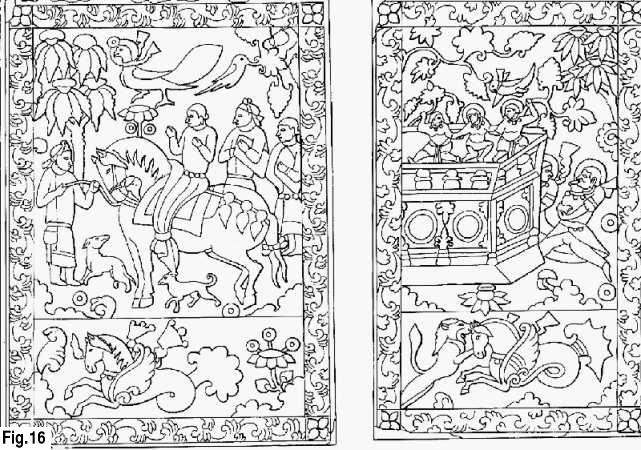
Fig. 16: Drawing from two carved marble panels from Yu Hong's
sarcophagus dated 593 CE found in Taiyuan, Shanxi (after Wenwu,
2001.1:35, Figs, 15-16).
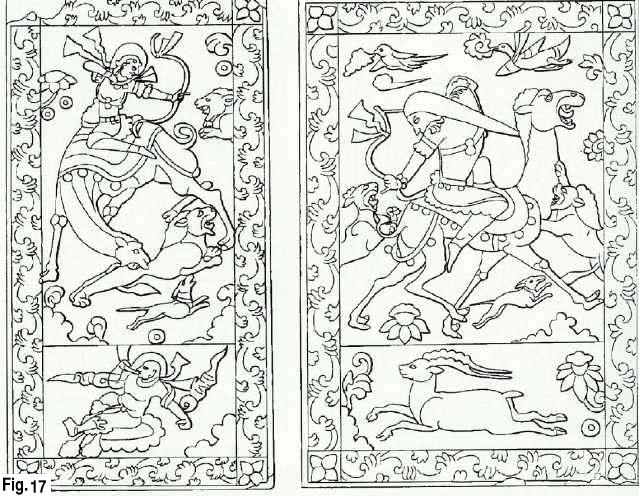
Fig. 17: Drawing from two panels depicting Turks hunting on
camelback from Yu Hong's sarcophagus, dated 593 CE, found in
Taiyuan, Shanxi (after Wenwu, 2001.1:36, Figs. 17-18).
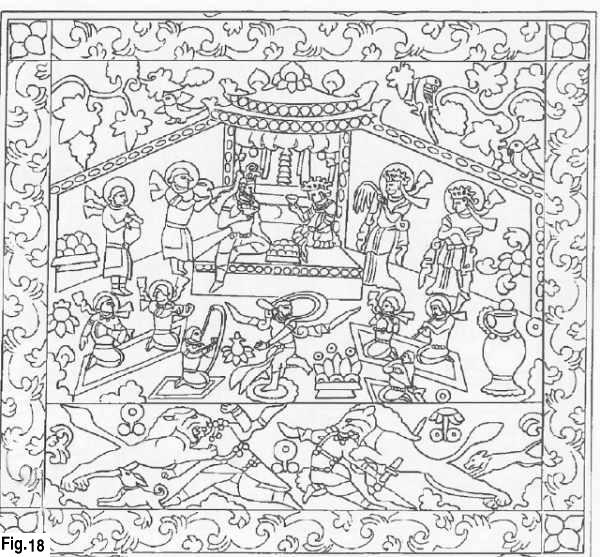
Fig. 18: Drawing of a panel depicting a feasting scene from Yu
Hong's sarcophagus dated 593 CE found in Taiyuan, Shanxi
(after Wenwu, 2001.1:37, Fig. 19).
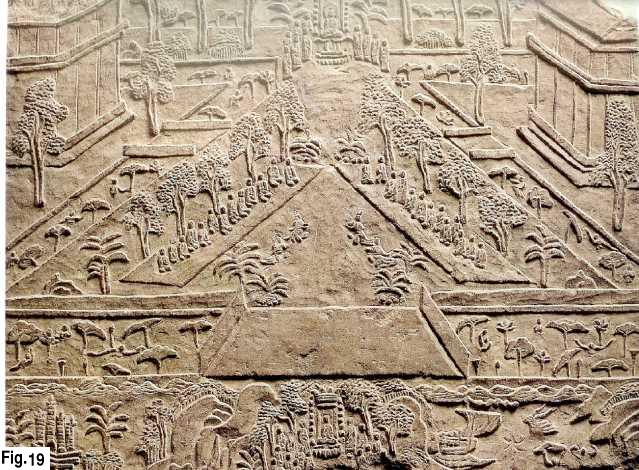
Fig.19: Back of a Buddhist stele with relief carving depicting a
paradise scene unearthed at Wanfo Temple, Chengdu, Sichuan, dated to
the early to mid sixth century (after Chengdu Wanfosi shiku
yishu, Beijing, 1957).
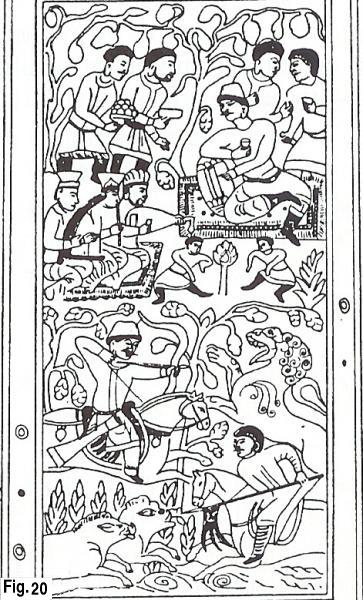
Fig. 20: Drawing of one panel depicting a boar hunt from An Jia's
funerary couch, dated 579 CE found in
Xi'an, Shaanxi (after Wenwu, 2001. p. 16, Fig. 20 and
Han Wei, Han Wei kaogu wenji (Beijing, 2001):104-119).
Actualizado el 24/07/2004